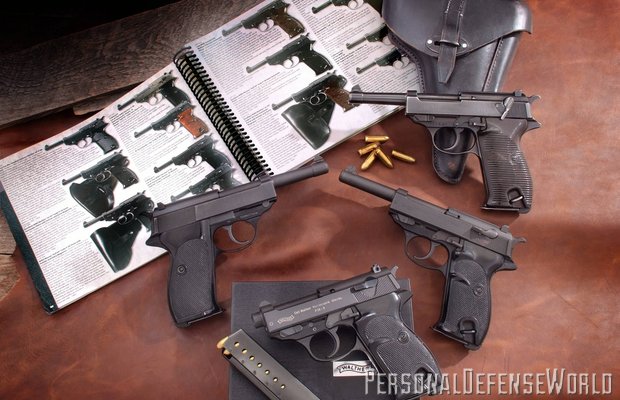Walther developed its first semi-automatic pistol, the Model 1, back in 1908. Thirty years later, the legendary German arms-maker unveiled what has become one of the greatest semi-autos in the world—the P.38.
Walther first began developing the gun in 1935, when the design was known as the Armee-Pistole, for which German patents were issued in 1936. Eric and Georg Walther were awarded the patent protecting the breech block, extractor, firing pin and loaded-chamber indicator, while Fritz Walther and associate Fritz Barthlemens obtained the patent for the breech locking system. But the Armee-Pistole was just a beginning—it was somewhat different from the gun that would eventually become the P.38. The double-action Armee-Pistole did not have an external hammer, the inclusion of which was the principal change between this weapon and the Heeres-Pistolen, or HP, which itself was further modified and officially named the Pistole 38 in 1938.
Original P.38
Advertisement — Continue Reading Below
The P.38 featured a recoil-operated, locked-breech design with a vertically tilting blocking bar that connected the short moving barrel and the slide. It also featured a short, top-open slide and double-action operation, the latter being a first for a military semi-auto in 9mm. The P.38 incorporated a manual safety lever that could also function as a decocking device. This safety lever, mounted on the left side of the slide, was used to hold the firing pin in place as the hammer was dropped, thus preventing a loaded cartridge from being discharged. It was a very good design, but it could wear over time, so it is best to use the safety lever on early military and commercial models only as a safety and not as a manual decocker.
























